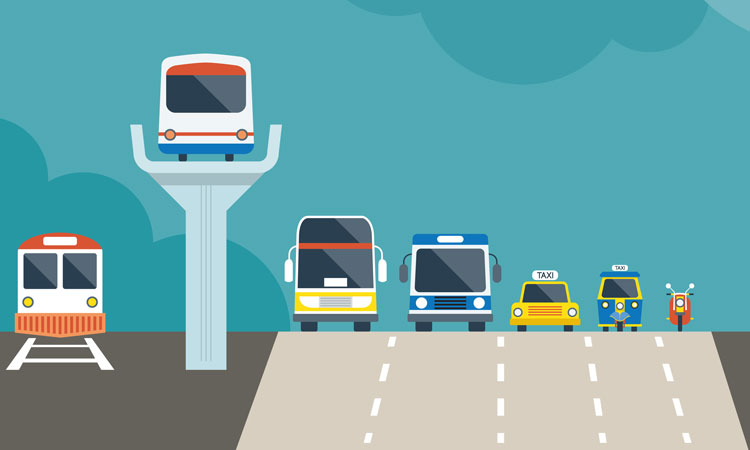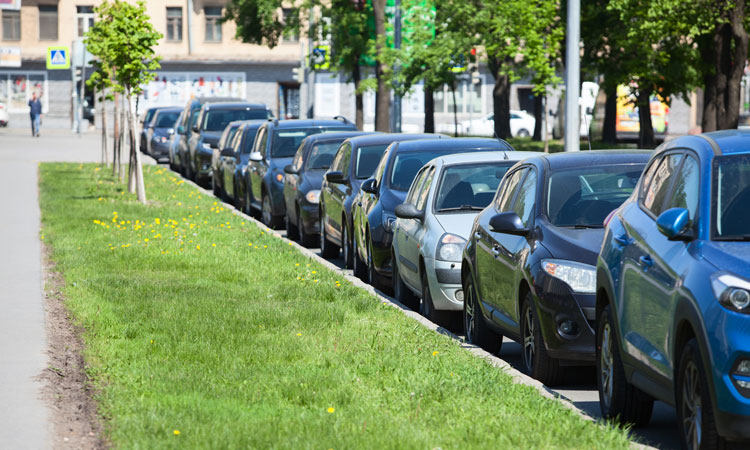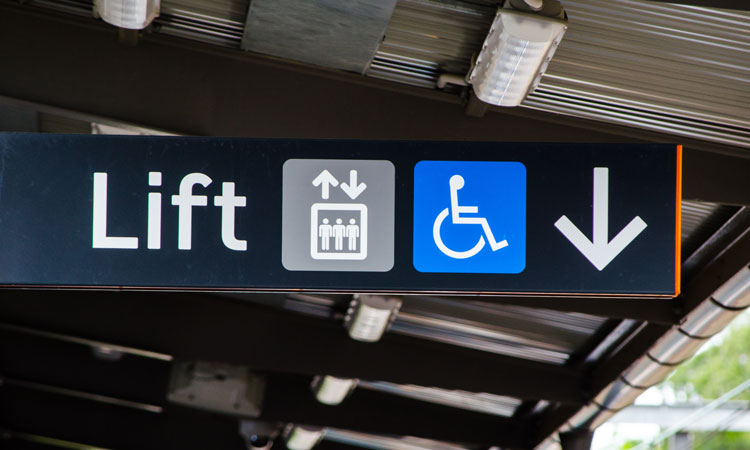Top five technology trends to transform mobility in 2019
- Like
- Digg
- Del
- Tumblr
- VKontakte
- Buffer
- Love This
- Odnoklassniki
- Meneame
- Blogger
- Amazon
- Yahoo Mail
- Gmail
- AOL
- Newsvine
- HackerNews
- Evernote
- MySpace
- Mail.ru
- Viadeo
- Line
- Comments
- Yummly
- SMS
- Viber
- Telegram
- Subscribe
- Skype
- Facebook Messenger
- Kakao
- LiveJournal
- Yammer
- Edgar
- Fintel
- Mix
- Instapaper
- Copy Link
Posted: 18 January 2019 | Carol Schweiger - Schweiger Consulting | No comments yet
Intelligent Transport’s Carol Schweiger, also President of Schweiger Consulting, highlights the technology trends that have the potential to help change mobility in 2019.
Wondering what to look out for in 2020? Take a look at Carol’s top predictions for the coming 12 months.
1. Creating the ‘complete’ trip


The ‘complete trip’ will be a focus area for the convergence of technology and mobility. It is defined as having a number of components or trip stages that begin with trip planning and end with the traveller’s arrival at their destination. At each stage of the trip, a traveller’s need for information using technology will change. Understanding these needs will grow considerably in 2019. For example, in the U.S., the Accessible Transportation Technologies Research Initiative (ATTRI) of the U.S. Department of Transportation (USDOT) has defined a complete trip as consisting of five major stages. Further, another USDOT effort that is assessing existing standards – and gaps and conflicts in standards associated with multimodal and accessible travel – is breaking the complete trip down into even more stages, including the following:
- Before the trip begins (such as trip planning, reservations and trip confirmation)
- At the trip origin
- Between the trip origin and the first stop/station, such as crossing streets (if applicable)
- At station, stop, terminal or park-and-ride location (this stage could repeat if it is a multimodal trip):
- Bus stop/transportation network company (TNC) pickup point
- Station platform
- Bike-share or scooter docking station/dockless bike or scooter location
- Car-share location
- Station entrance and common areas
- Terminal location (including ferry terminals)
- Boarding a vehicle/bicycle/scooter/other mobility service
- On-board vehicle/bicycle/scooter (could also be repeated if it is a multimodal trip):
- Inside tunnel/underground
- At surface
- Alighting a vehicle/bicycle/scooter/other mobility service
- Between stop and transfer location (again can repeat if it is a multimodal trip)
- Between final stop and final destination
The need for technology within each of these stages will become better understood in 2019.
2. Curb-side management


The value of the curb, and methods to dynamically allocate and price the curb, will be defined and demonstrated more clearly in 2019. While there has been much discussion over the past few years about how significant an impact curb usage has on mobility, 2019 will bring actual pilot projects that show how to effectively manage the curb. For example, the Institute of Transportation Engineers developed a Curbside Management Practitioner’s Guide “for local jurisdictions on how to inventory, assess, enhance, and prioritize curb spaces to meet the multi-modal demands at the curb in a safe and efficient way.”1 According to the International Transport Forum (ITF), the following three questions will be answered in the near-term2:
- Will changes in transport activity – or more broadly, in society – have an impact on the way in which people and businesses derive value from curb access?
- Are the right metrics and monitoring systems in place to measure curb use, productivity and efficiency, and if not, what these might look like?
- What implications will these changes have for public authorities, not only from the point of view of regulation, but also from a revenue perspective?
3. Promoting accessibility and inclusivity


Inclusive and accessible mobility will continue to be a focus in 2019, particularly as transportation technology advances and more mobility services are available to travellers. As discussed in my Intelligent Transport article entitled Accessibility and inclusivity: two vital elements of mobility, user needs must drive transport to become more accessible and equitable. For example, in the ATTRI programme mentioned earlier, the technology-enabled services that are critical to meeting this goal and for which applications are being piloted are wayfinding and navigation; pre-trip concierge and virtualisation; safe intersection crossing; and robotics and automation. Further, from an automated vehicle perspective, “machine vision, artificial intelligence (AI), assistive robots and facial recognition software” will be facilitating travel for persons with disabilities. Finally, in terms of equity and inclusion, 2019 will see the technology and policy implications of transport equity begin to be addressed. Given frameworks such as Spatial, Temporal, Economic, Physiological and Social (STEPS) to Transportation Equity, which was developed in the U.S., the opportunities and challenges in the technology and policy areas can be used to begin to implement solutions for disabled, low-income and elderly travelers.
4. Understanding travel behaviour changes


It was identified in many mobility and transportation technology conferences in 2018 that we need a better understanding of changes in travel behavior as a result of new technology-driven mobility choices. In 2019, it is expected that the following will lead to a better understanding of travel behavior3:
- Behavioural science and behavioural design will assist in identifying and proposing those mobility services that could best fit the needs of different types of travellers
- Acceptance, adoption of and attitudes toward new mobility services, including Mobility-as-a-Service (MaaS) and automated vehicles, will continue to be studied and determined using techniques such as the Technology Acceptance Model, which measure the influences of perceived risk and enjoyment, and behavioural intention of users
- Mobility behaviour is strongly affected by routine behaviour and habits. To change mobility behaviour, existing research in the fields of sociology, psychology and behavioral economics should be considered in MaaS design since they describe a number of biases and heuristics which significantly influence decisions behaviour
- The explosion of new mobility services over the last two to three years has added considerable complexity for the traveller, making it much more challenging to model travel behaviour and design systems that meet user needs.
5. Encouraging data sharing


Data sharing continues to be vital for mobility and tools that facilitate mobility, such as MaaS. However, it can be challenging to obtain operational data from private mobility providers, such as ride-sourcing companies (e.g., Uber, Lyft). In 2019, I expect that more local and regional governments will develop policies and introduce legislation requiring operational data resulting from all mobility service providers. This data is critical to understanding not only the market share of various mobility services in a city or region, but also the impact that these services have on public transport. For example, in San Francisco, one of the 10 guiding principles that must be met by all mobility service providers is in the area of accountability: “Service Providers must share data for the city and public to determine the services’ benefits and impacts on transport and whether or not the services’ meet the city and county’s transport goals.” However, legislation addressing data sharing is not without controversy, as evidenced by the rules proposed by the District of Columbia:
A log of trips performed by private vehicle-for-hire operators utilizing the digital dispatch services of the private vehicle-for-hire company in the District, including, for each trip, the point of origin and destination, the date and time of pick-up and drop-off, the stationary time at pick-up and drop-off, the fare paid, whether the trip was on a private or shared service, and the number of passengers in the vehicle.4
Uber and Lyft fought against this draft legislation. Arguments on the other side were that data can be shared with a city of regional government without releasing it to competitors.
References
1. http://www.fehrandpeers.com/curbside-management/, accessed on January 15, 2019
2. ITF, The Shared-Use City: Managing the Curb, © OECD/ITF 2018, https://www.itf-oecd.org/sites/default/files/docs/shared-use-city-managing-curb_3.pdf, page 12
3. Derived from
4. David Alpert, “DC may require ride-hailing companies to share data, but won’t encourage pooling,” Greater Greater Washington, May 15, 2018, https://ggwash.org/view/67644/dc-require-ride-hailing-companies-share-data-not-carpooling
Related topics
Infrastructure & Urban Planning, Mobility Services, Multimodality, Passenger Accessibility, Passenger Experience
Related modes
Bikes & Scooters, Ride-sharing & Car-sharing
Related people
Carol Schweiger








